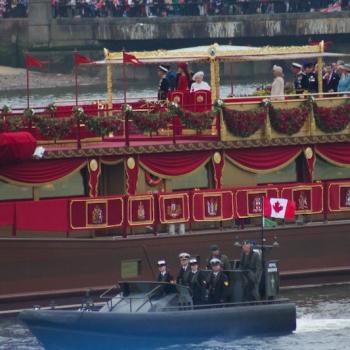![By Greg L [CC BY 2.0 (http://creativecommons.org/licenses/by/2.0)], via Wikimedia Commons](https://wp-media.patheos.com/blogs/sites/667/2016/09/Plane_crash_into_Hudson_River_crop-300x160.jpg)
I made that comment to my husband as we drove to the press preview for the movie, “Sully.” It goes into wide release this Friday, September 9, 2016.
And yes, we all know the ending. Captain “Sully” Sullenberger, flying US Airways Flight 1549, landed his plane only a few minutes after take-off in the icy-cold Hudson River after a bird hit destroyed both engines.
Everyone, 150 passengers, 5 crew members survived. End of story.
Except there is so much more. There’s the tormented Sully in the aftermath of the landing. His nightmares of having crashed into a building in New York, killing not only his passengers but many others as well.
There’s the inquiry by the National Transportation Safety Board (NTSB). Although that inquiry actually took place 18 months later, the movie conflates the time and portrays it happening a few days after the landing. It’s an effective technique. We see the relentless grilling by the NTSB officials, who insisted that one engine still had power and that Sully indeed could have made it either back to LaGuardia or to Teterboro airport juxtaposed with Sully’s own mental and emotional anguishes.
There is the issue of blame: If the NTSB could prove that Sully made a wrong call, the insurer would not have to pony up the cost of a new airplane AND Sully would have been fired and his pension revoked. Money matters. Integrity . . . well, in the long run, yes it counts. But in the short run, it’s so easy to compromise.
This investigation comprises a part of the story that few know and more should. It also reminds the viewer of how easy it is to second-guess an action when the heat is off and when there is time to practice the response.
There’s the issue of maturity and experience. The reason Sully was able to do what he did is pretty simple: he was exceptionally good at his job. His 40 years in the cockpit prepared him for the worst moments in his life. He was a not only a practiced and competent aviator, but also a practiced and competent human being.
That’s the central motif of the movie, but it is presented subtly, hovering in the background of a first-rate recreation of the plane flight and the short 208 seconds between the bird hit and the plane skimming along the Hudson river.
Tom Hanks, the extraordinarily accomplished actor, plays to perfection Captain Sullenberg. His expressive face shows calm in the crisis, his awareness that all might indeed die, his passion for his passengers in making sure every single person was off the plane before he disembarked.
Sully refused to be named a hero or the sole reason that people survived. He knew the outcome would have been different without his co-pilot, the flight attendants, the passengers, and the well-coordinated actions of the Coast Guard and other New York City rescue agencies.
This is a great family movie. The combination of action, threat–both physical and professional–and relationship combine to create a keeper. It also helps the viewer see deeper stories behind surface headlines, to enter into real fear and astounding courage, to celebrate the disciplined life, and to rejoice when we see life emerge when all looks like death.













